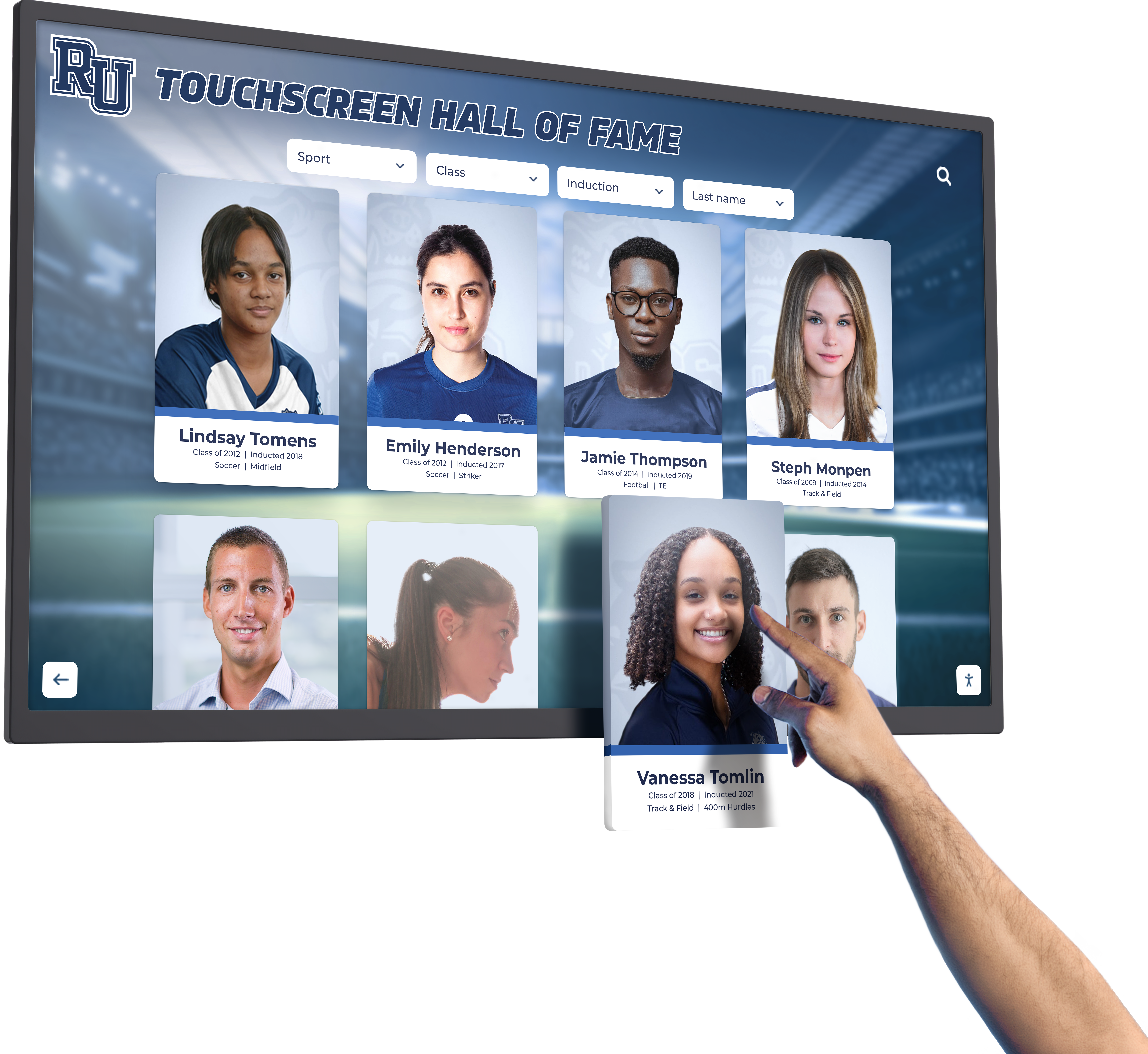Esports has exploded from niche hobby to mainstream phenomenon, with high schools and colleges across the country establishing competitive gaming programs that rival traditional athletics in participation, dedication, and achievement. Yet while basketball champions see their names displayed prominently in gymnasium trophy cases and football records occupy dedicated recognition boards, esports athletes often compete in relative obscurity—their achievements unrecognized, their commitment unacknowledged, their accomplishments invisible to the broader school community.
This recognition gap sends a troubling message: that esports achievements don’t matter as much as traditional athletic success, that competitive gaming isn’t “real” enough to warrant celebration, that the skills, teamwork, and dedication required for esports excellence somehow count less than those demonstrated on conventional playing fields. Forward-thinking schools are rejecting this outdated hierarchy by implementing comprehensive esports recognition programs that celebrate gaming excellence with the same visibility and respect afforded to any varsity sport.
This comprehensive guide explores how schools are building esports recognition programs that legitimize competitive gaming, celebrate player achievements, build school pride around emerging programs, and create visible pathways inspiring future participants. Whether you’re establishing a new esports program or seeking to enhance recognition for an existing one, these strategies will help you celebrate gaming excellence in ways that generate the respect and visibility these athletes deserve.
Understanding Esports Recognition in Educational Settings
Before implementing recognition strategies, it’s essential to understand what makes esports recognition both similar to and different from traditional athletic recognition.
What Qualifies as Esports Achievement?
Esports recognition can celebrate diverse accomplishments across multiple dimensions:
Competitive Performance:
- Tournament victories at local, regional, state, or national levels
- Individual player statistics and records (kills, assists, objectives)
- Team performance metrics and seasonal records
- Playoff appearances and championship runs
- All-conference, all-state, or all-American selections
- World ranking achievements or ladder positions
Academic Integration:
- Maintaining academic eligibility while competing
- Student-athletes earning academic honors
- Balancing competition schedules with coursework
- GPA achievements among competitive players
- Scholar-athlete recognition programs
Leadership and Character:
- Team captaincy and leadership roles
- Mentorship of newer players
- Sportsmanship awards and positive conduct
- Community engagement and outreach
- Streaming or content creation representing the school
- Coaching or analysis contributions
Program Development:
- Founding members of new esports programs
- Recruitment efforts bringing new players
- Fundraising contributions supporting the program
- Equipment procurement or facility development
- Building school esports culture and community
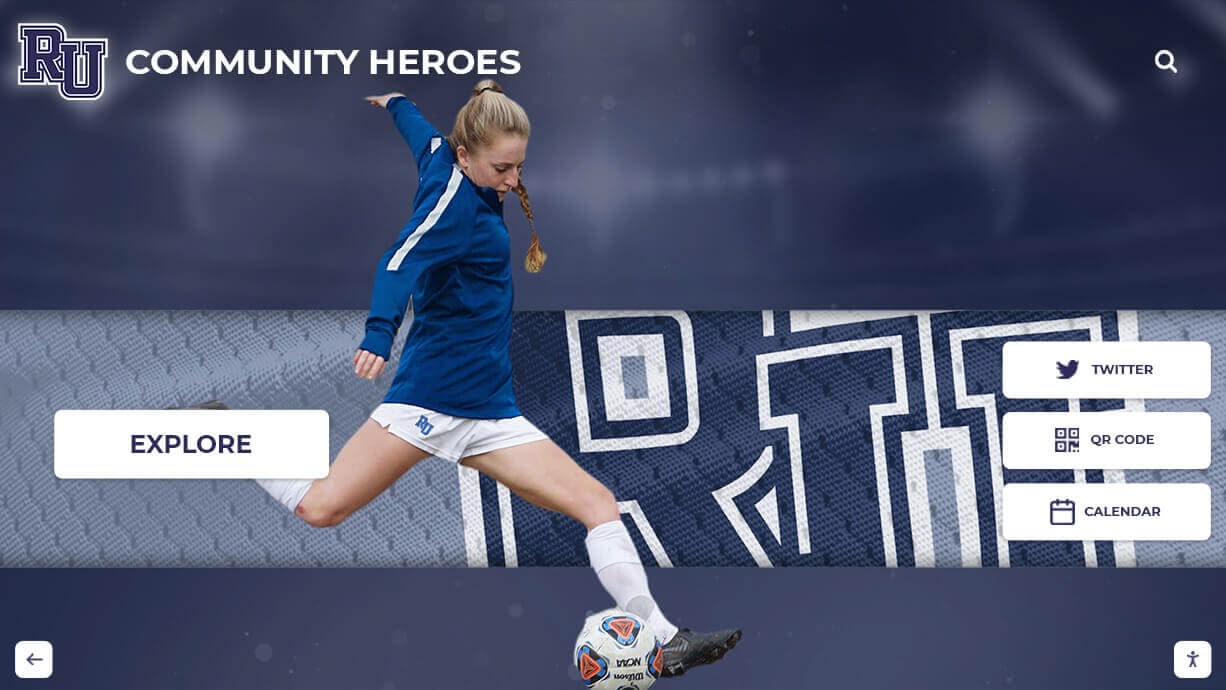
The Legitimacy Challenge: Why Recognition Matters for Esports
Many schools hesitate to provide esports recognition equivalent to traditional athletics due to lingering perceptions that gaming isn’t “real” sport, that screen time shouldn’t be encouraged, or that esports lacks the physical demands justifying athletic recognition. These objections crumble under scrutiny.
Esports Requires Elite-Level Skills: Competitive gaming demands reaction times measured in milliseconds, strategic thinking rivaling chess grandmasters, hand-eye coordination exceeding most traditional sports, teamwork and communication under pressure, mental endurance through hours-long competitions, and adaptation to constantly evolving game mechanics. The cognitive and physical demands are substantial and measurable.
Collegiate and Career Opportunities Are Real: The scholarship opportunities, career pathways, and professional prospects in esports now match or exceed many traditional sports. Students pursuing esports can access educational opportunities they might not otherwise receive, develop marketable skills applicable across industries, and potentially earn substantial income through competition or related careers.
Student Engagement Benefits: Schools implementing esports programs consistently report increased student engagement, improved attendance among participants, enhanced school pride and community, recruitment of students passionate about gaming, and pathways keeping at-risk students connected to school. The engagement benefits mirror those of traditional athletics.
When schools provide esports recognition equivalent to traditional sports, they send powerful messages that diverse talents are valued, that student passions matter regardless of form, that achievement deserves celebration across domains, and that the institution recognizes emerging opportunities for student success.
Designing Esports Recognition Programs
Effective esports recognition programs balance celebrating achievements while building credibility for emerging programs.
Establishing Esports Recognition Categories
Comprehensive programs recognize diverse achievements rather than focusing narrowly on championship victories:
Individual Player Recognition:
- Season statistical leaders (eliminations, assists, objectives)
- Career achievement milestones (games played, career statistics)
- All-conference and all-state selections
- MVP and player of the year awards
- Improvement and breakout player recognition
- Senior legacy acknowledgments
Team Achievement Recognition:
- Season records and winning percentages
- Conference championships and tournament victories
- State, regional, and national championship appearances
- Playoff qualifications and advancement
- Undefeated seasons or winning streaks
- Historic team accomplishments and milestones
Scholar-Athlete and Character Recognition:
- Academic all-conference honors
- GPA achievements while competing
- Sportsmanship and conduct awards
- Leadership and mentorship recognition
- Community service contributions
- Program building and development honors
Game-Specific Recognition: Traditional athletics recognize sport-specific achievements. Esports programs should similarly recognize game-specific accomplishments across their competitive titles including League of Legends, Valorant, Rocket League, Super Smash Bros., Overwatch, Counter-Strike, Fortnite, and emerging competitive titles.
Each game requires distinct skills and strategies worthy of separate recognition, just as football records don’t mix with basketball achievements on traditional record boards.

Integration with Traditional Athletic Recognition
Schools face decisions about whether to integrate esports recognition with traditional athletics or maintain separate recognition spaces. Each approach offers advantages:
Integrated Recognition Approach:
- Esports appears alongside football, basketball, and other sports
- Signals that esports achievements carry equal legitimacy
- Builds broader school pride encompassing all competitive programs
- Creates opportunities for cross-program connections
- May face resistance from traditional athletics stakeholders
Dedicated Esports Recognition Space:
- Allows for game-specific detail and achievement categories
- Creates distinct identity for emerging esports program
- Accommodates esports-specific content like gameplay highlights
- Builds esports community through dedicated space
- May reinforce separation from traditional athletics
Many successful programs adopt hybrid approaches: including esports in general athletic recognition displays while maintaining dedicated esports spaces for detailed game-specific records and achievements. This strategy provides both legitimacy through integration and appropriate detail through dedicated recognition.
Solutions like digital recognition displays excel in esports contexts because they accommodate unlimited achievement categories, include multimedia content like gameplay highlights and team videos, update instantly as new records are set or tournaments are won, allow game-specific filtering and exploration, and scale as programs add new competitive titles.
Creating Esports Hall of Fame Programs
As esports programs mature, some schools establish formal hall of fame programs recognizing the most distinguished players, teams, and contributors:
Selection Criteria for Esports Hall of Fame:
- Competitive achievement thresholds (championships, all-conference selections)
- Minimum participation requirements (seasons played, games competed)
- Academic performance standards (GPA requirements, graduation)
- Character and sportsmanship considerations
- Post-graduation achievements (collegiate esports, professional gaming)
- Contribution to program development and growth
Nomination and Selection Process:
- Annual nomination windows with clear procedures
- Selection committees including coaches, administrators, and alumni
- Student input through voting or committee representation
- Transparent criteria and decision-making processes
- Induction ceremonies celebrating honorees
- Ongoing visibility through digital halls of fame displays
Establishing formal hall of fame programs signals institutional commitment to esports while creating aspirational goals motivating current competitors.
Technical Implementation of Esports Recognition Displays
The multimedia nature of esports achievements makes digital recognition platforms particularly effective for celebrating gaming excellence.
Advantages of Digital Recognition for Esports
Traditional trophy cases and plaques struggle to capture esports achievements effectively. Digital platforms offer substantial advantages:
Multimedia Integration:
- Embedded gameplay highlights showing championship moments
- Team introduction videos and player profiles
- Tournament brackets and competition progression
- Live streaming integration during active competitions
- Screenshot galleries from memorable matches
- Audio commentary and player interviews
Dynamic Content and Real-Time Updates: Unlike traditional sports where records change infrequently, esports sees constant statistical updates. Digital displays enable instant record updates after each match, live leaderboards during active seasons, tournament bracket updates in real-time, and immediate recognition of new achievements.
Game-Specific Organization: Digital platforms easily organize content by competitive title, allowing visitors to explore League of Legends achievements separately from Valorant records, just as traditional athletics separates football from basketball recognition.
Search and Filter Functionality: Students can search for specific players, filter by graduation year or game title, explore team histories, and discover connections between current and former competitors—interactions impossible with static physical displays.
Social Sharing and Amplification: Modern interactive recognition systems enable students to capture and share their recognition on social media, extending program visibility beyond individuals physically viewing displays.

Content Development for Esports Recognition
Effective esports recognition requires thoughtful content development that makes achievements accessible and compelling:
Player Profiles Should Include:
- High-quality player photos (action shots from competitions when possible)
- Competitive statistics and achievements
- Game-specific roles and specializations
- Academic honors and graduation year
- Memorable moments or signature plays
- Post-graduation pathways (collegiate esports, careers)
- Personal statements or player interviews
Team Pages Should Feature:
- Team photos and roster information
- Season records and tournament results
- Championship documentation with dates and locations
- Gameplay highlights from significant matches
- Coach acknowledgments and staff recognition
- Season narratives explaining team development
- Statistics leaders and standout performers
Game Title Pages Should Present:
- Historical program performance in that title
- All-time statistical leaders across categories
- Championship history and major achievements
- Current season standings and results
- Program records and individual records
- Notable alumni who competed in that title
Tournament and Competition History: Document major competitions with results, brackets showing advancement, photos from events, individual performance statistics, and context about competition significance.
Hardware Considerations for Esports Recognition
While content matters most, hardware selection affects user experience and program perception:
Display Size and Resolution: Esports content benefits from larger screens that showcase gameplay video effectively. Consider 55-inch or larger displays with 4K resolution ensuring crisp text and video clarity. The visual quality signals that esports achievements receive equivalent investment to traditional athletics.
Placement and Visibility: Locate esports recognition displays in high-traffic areas where students naturally gather including main lobbies and entrance areas, cafeterias and common spaces, near esports practice or competition areas, alongside traditional athletic recognition, and in spaces prospective students and families visit during tours.
Prominent placement signals institutional commitment while building broader awareness of esports achievements across the school community.
Interactive Capabilities: Touchscreen functionality enables student exploration of detailed statistics, video playback of memorable moments, filtering by game title or season, and search functionality finding specific players. This interactivity matches how gamers naturally engage with content.

Building School Pride Through Esports Recognition
Recognition alone doesn’t automatically generate school pride. Strategic approaches amplify the pride-building impact of esports recognition.
Connecting Esports to Broader School Identity
Help the broader school community understand and celebrate esports achievements:
Educational Outreach: Many students, parents, and community members lack familiarity with competitive gaming. Educational initiatives might include informational displays explaining esports basics, competitive structures, and skill requirements, assembly presentations showcasing esports teams and achievements, parent information sessions about esports programs and opportunities, student newspaper and media coverage of competitions and results, and recognition of esports alongside traditional sports in announcements and publications.
This education builds understanding that esports requires legitimate skill, dedication, and teamwork worthy of celebration.
Attendance and Spectatorship: Traditional athletics builds pride partly through spectator experience. Schools can create similar experiences for esports through viewing parties for major competitions, championship watch parties in common areas with commentary, student sections supporting esports teams during competitions, parent attendance at tournaments and matches, and streaming competitions accessible to broader audiences.
When students and community members actually watch competitive gaming, they develop appreciation for the skill involved and investment in team success.
Spirit and Traditions: Build esports-specific traditions that create identity and pride including team introductions and player walkouts, victory celebrations and championship acknowledgments, rivalry match buildup and traditions, senior night or end-season celebrations, and integration into school spirit events like homecoming.
These traditions mirror traditional athletics while establishing esports legitimacy and building team culture.
Recruiting and Program Growth Through Recognition
Visible recognition attracts participants and builds program momentum:
Prospective Student Appeal: Gaming-passionate students often struggle finding school connection. Prominent esports recognition signals that your school values their interests, offers competitive opportunities, and provides pathways to collegiate esports and careers. This attracts students who might otherwise feel disconnected from school activities.
Families touring schools increasingly inquire about esports programs. Professional recognition displays demonstrate program quality and institutional commitment, differentiating your school from competitors lacking similar offerings.
Current Student Recruitment: Many potential esports participants don’t initially realize competitive opportunities exist. Visible recognition displays in high-traffic areas advertise program existence, showcase achievement opportunities, demonstrate that participation is valued, and provide information about joining teams.
This visibility drives program growth by reaching students who would benefit from participation but might not otherwise learn about opportunities.
Alumni Engagement and Support: As early esports program participants graduate, recognition maintains their connection to the school similar to how traditional athletic recognition engages alumni. Alumni engagement strategies that work for traditional athletics apply equally to esports—celebrating achievements, maintaining connections, and eventually soliciting support as programs mature.
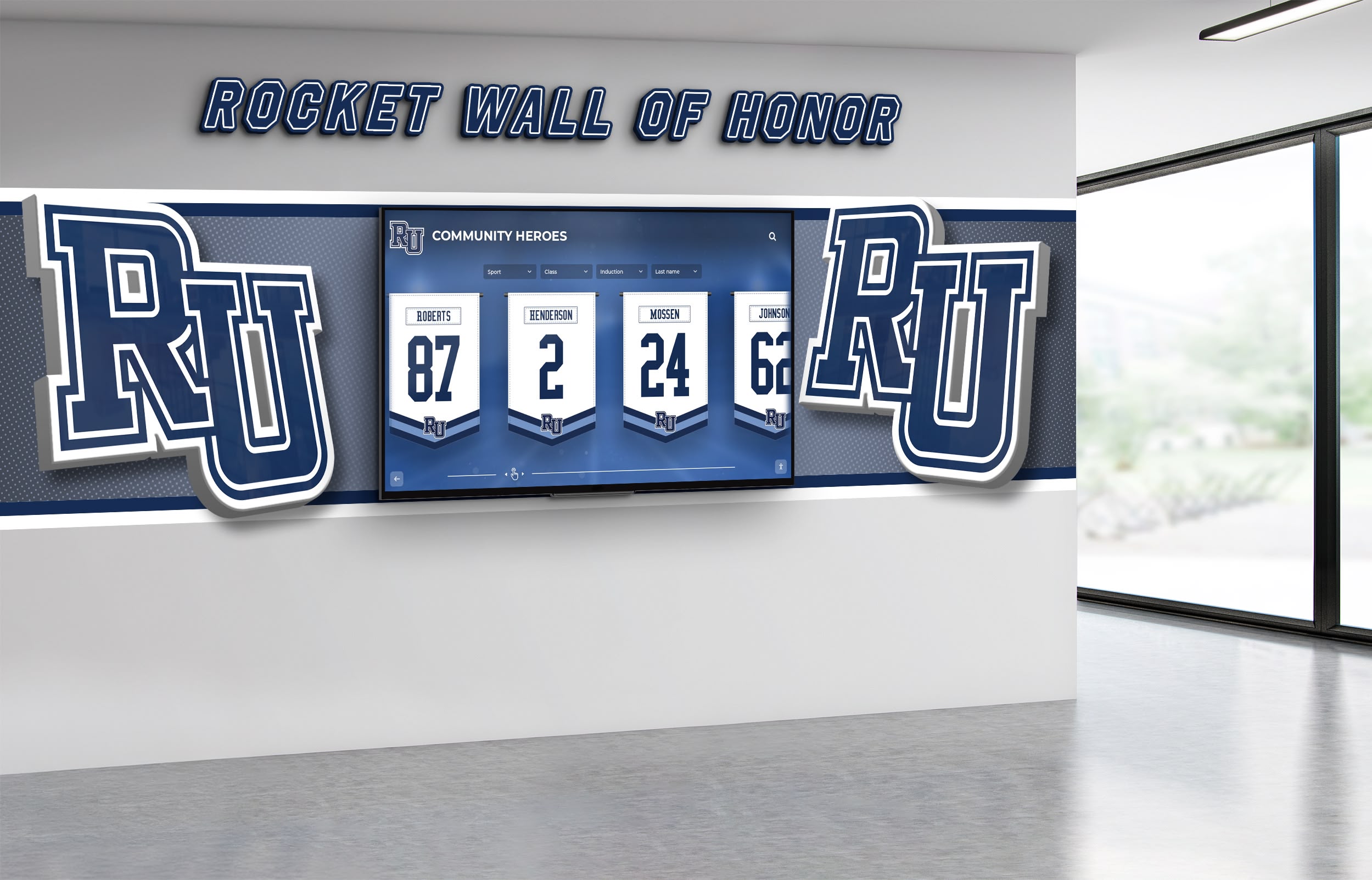
Overcoming Resistance and Building Stakeholder Support
Despite growing legitimacy, esports recognition may face resistance from various stakeholders. Strategic approaches address common objections:
Addressing Traditional Athletics Concerns
Athletic directors and coaches sometimes view esports as competing for resources, attention, or legitimacy. Productive approaches include:
Emphasizing Complementary Rather Than Competitive Relationship: Esports attracts different student populations than traditional athletics, often engaging students who wouldn’t otherwise participate in school activities. Rather than competing for the same students, esports expands overall participation in school programs.
Many schools find that esports and traditional athletics coexist successfully, sometimes with student-athletes participating in both. The recognition pie isn’t zero-sum—celebrating esports doesn’t diminish traditional athletic recognition.
Demonstrating Similar Values and Benefits: Help traditional athletics stakeholders recognize that esports develops similar values including teamwork and collaboration, dedication and practice commitment, goal-setting and achievement, handling victory and defeat gracefully, time management and responsibility, and school pride and representation.
When framed as complementary programs developing similar character traits through different activities, resistance often diminishes.
Starting with Integration Rather Than Separation: Including esports within broader athletic recognition from the beginning signals unity rather than division. When the football team and esports team appear on the same recognition display, it physically demonstrates their equivalence and shared contribution to school athletics and spirit.
Building Parent and Community Understanding
Parents and community members who didn’t grow up with gaming may lack context for esports legitimacy:
Highlighting Collegiate and Career Opportunities: Share concrete information about scholarship opportunities, successful alumni pursuing collegiate esports or gaming careers, the size and growth of the gaming industry, and transferable skills developed through competitive gaming applicable to various careers.
When parents understand that esports provides genuine educational and career pathways comparable to traditional athletics, support increases dramatically.
Addressing Screen Time Concerns: Some parents worry that school esports programs encourage excessive screen time. Address this through structured practice schedules limiting participation hours, academic eligibility requirements ensuring school performance, physical fitness components in comprehensive programs, and emphasis on balance between gaming and other activities.
Structured school programs actually provide healthier frameworks than unmonitored recreational gaming, establishing boundaries and expectations that prevent excess.
Showcasing Academic Integration: Highlight how esports integrates with academic programs through STEM connections in game design and programming, business and marketing courses tied to esports industry, communication skills through streaming and commentary, statistics and analytics in performance optimization, and project-based learning around esports topics.
This academic integration demonstrates educational value beyond competition itself.
Securing Administrative and Budgetary Support
School administrators making resource allocation decisions need compelling rationale for esports recognition investments:
Demonstrating Return on Investment: Present data about student engagement impact, attendance improvements among participants, recruitment advantages with gaming-interested students, relatively low cost compared to traditional athletics, and potential revenue through sponsorships or community engagement.
Recognition solutions for esports often cost less than traditional athletic recognition while providing greater flexibility and capacity.
Starting Small and Scaling: If budget concerns limit initial investments, pilot programs demonstrate value before requesting larger commitments. Begin with modest recognition displays for existing esports programs, document engagement and impact, expand recognition as success becomes evident, and use early results to justify increased investment.
Connecting to Broader Institutional Goals: Frame esports recognition in terms of broader school objectives including student engagement and retention, diversity and inclusion, innovation and forward-thinking identity, college and career readiness, and competitive advantage in student recruitment.
When esports recognition advances multiple institutional priorities simultaneously, approval becomes more likely.
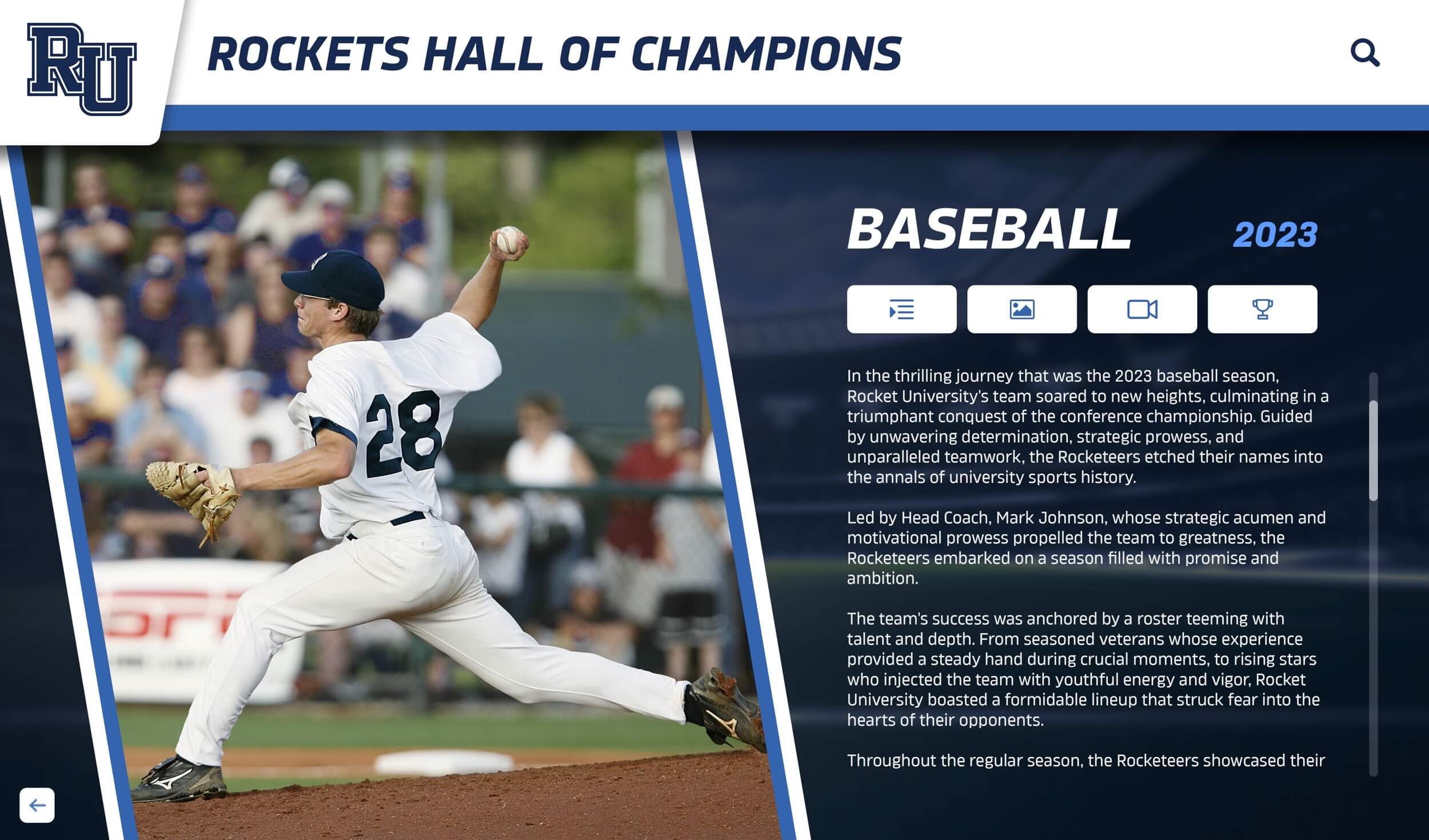
Recognition Across Different Esports Titles
Different competitive games require different recognition approaches reflecting their unique characteristics:
Team-Based Strategy Games (League of Legends, Dota 2, Overwatch)
These games emphasize team coordination and role specialization:
Relevant Recognition Categories:
- Team seasonal records and tournament results
- Role-specific achievement (top damage dealer, support rating, tank effectiveness)
- Objective control statistics (dragons, barons, points captured)
- Individual accolades within team context
- Team synergy and coordination achievements
Tactical Shooters (Valorant, Counter-Strike, Rainbow Six Siege)
First-person shooters reward precision and strategic thinking:
Relevant Recognition Categories:
- Kill/death ratios and accuracy statistics
- Clutch plays and high-pressure performance
- Agent or operator specialization achievements
- Round win percentages and contribution statistics
- Tournament performance under pressure
Battle Royale (Fortnite, Apex Legends)
Survival games emphasize adaptation and consistency:
Relevant Recognition Categories:
- Victory royales and top placement statistics
- Elimination records and survival time
- Squad performance and team placement
- Solo versus team competition achievements
- Tournament consistency across multiple matches
Fighting Games (Super Smash Bros., Street Fighter)
Individual competition showcasing technical mastery:
Relevant Recognition Categories:
- Head-to-head records and win percentages
- Tournament placement and advancement
- Character mastery and diversity
- Notable matchup victories
- Technical execution and combo achievements
Sports Simulations (Rocket League, FIFA, Madden)
Games simulating traditional sports:
Relevant Recognition Categories:
- Season records and league standings
- Scoring statistics and game-winning plays
- Individual player ratings and rankings
- Tournament championships
- Skill rating progression and peak rankings
Each competitive title deserves recognition reflecting what success looks like in that particular game, just as track records differ from swimming records in traditional athletics.
Creating Year-Round Esports Recognition and Engagement
Unlike traditional sports with defined seasons, many esports competitions occur year-round. Recognition strategies should accommodate this continuous activity:
Season-Based Recognition
Even with year-round competition, organizing recognition by defined seasons creates structure:
Fall, Winter, and Spring Seasons: Different competitive titles might have primary seasons at different times. Organizing recognition by semester or season allows for periodic celebration of achievements rather than waiting until year-end for recognition.
Tournament-Specific Recognition: Major tournaments deserve dedicated recognition similar to playoff appearances in traditional sports. Document qualification for significant events, tournament performance and advancement, championship achievements, and individual standout performances during tournaments.
Live Integration During Active Competition
Digital recognition platforms can highlight current season performance alongside historical achievements:
Current Season Leaderboards: Display live statistical leaders in various categories, current team standings and records, upcoming competition schedules, and recent match results and highlights during active seasons.
This current content maintains relevance and engagement while historical recognition provides context and tradition.
Championship Countdown and Anticipation: As teams advance through playoffs or major tournaments, recognition displays can build anticipation through bracket updates, player profile highlights, historical context of championship pursuit, and countdown to championship matches.
This approach mirrors how traditional athletics builds excitement around playoff runs and championship opportunities.
Offseason Content and Historical Recognition
During competition downtime, recognition displays can focus on historical content including all-time records and career statistics, program history and development, alumni profiles and post-graduation success, recruiting information and participation opportunities, and educational content about competitive gaming.
This year-round content strategy ensures recognition remains relevant and engaging regardless of competition calendar.

Measuring Success and Impact of Esports Recognition
Effective programs assess whether recognition investments generate desired outcomes:
Participation and Engagement Metrics
Quantitative Measures:
- Student participation in esports programs
- Tryout attendance and program interest
- Retention of players across seasons
- Attendance at competitions and viewing parties
- Social media engagement with esports content
- Recognition display usage and interaction
Qualitative Indicators:
- Student testimonials about program value
- Community awareness and understanding
- Parent and family engagement
- School pride and spirit around esports
- Media coverage and external recognition
- Prospective student interest during tours
Academic and Character Outcomes
Monitor whether esports participation delivers benefits comparable to traditional athletics:
Academic Performance:
- GPA comparisons between esports participants and general population
- Attendance rates among competitive gamers
- Graduation rates and college acceptance
- Academic honor achievement rates
- Academic eligibility maintenance
Character and Leadership Development:
- Leadership opportunities and student participation
- Sportsmanship and conduct records
- Community service involvement
- Peer mentorship and program building
- Post-graduation success and contributions
Program Growth and Sustainability
Growth Indicators:
- Program expansion to additional competitive titles
- Budget increases and resource allocation
- Facility improvements and equipment investments
- Sponsorship and community support development
- Alumni engagement and ongoing connection
- Recognition of esports alongside traditional athletics
Systematic measurement demonstrates program value while identifying areas needing improvement or additional support.
Implementation Roadmap for Esports Recognition
Schools at various stages of esports program development can implement recognition strategically:
New Esports Programs (Year 1-2)
Focus on Foundation:
- Document all competitive participation and results
- Capture photos and video from initial competitions
- Establish statistical tracking systems
- Create basic recognition displays highlighting inaugural team
- Build awareness through educational outreach
- Connect esports to broader school identity
Even modest recognition during early program development signals institutional commitment while establishing documentation practices supporting more comprehensive recognition as programs mature.
Developing Programs (Year 3-5)
Expand Recognition Scope:
- Implement comprehensive statistical tracking
- Add interactive digital recognition displays
- Establish annual awards and recognition ceremonies
- Integrate esports into broader school spirit events
- Document program growth and milestones
- Begin alumni engagement with early program participants
As programs establish competitive track records, recognition can expand to include historical perspective, record tracking, and tradition building.
Established Programs (Year 5+)
Build Sophisticated Recognition Infrastructure:
- Implement esports hall of fame programs
- Create comprehensive multimedia recognition platforms
- Establish endowed awards or scholarships
- Build strong alumni networks and engagement
- Document program legacy and tradition
- Position esports recognition equivalent to traditional athletics
Mature programs can implement recognition infrastructure comparable to decades-old traditional athletic programs, celebrating esports achievements with appropriate sophistication and respect.
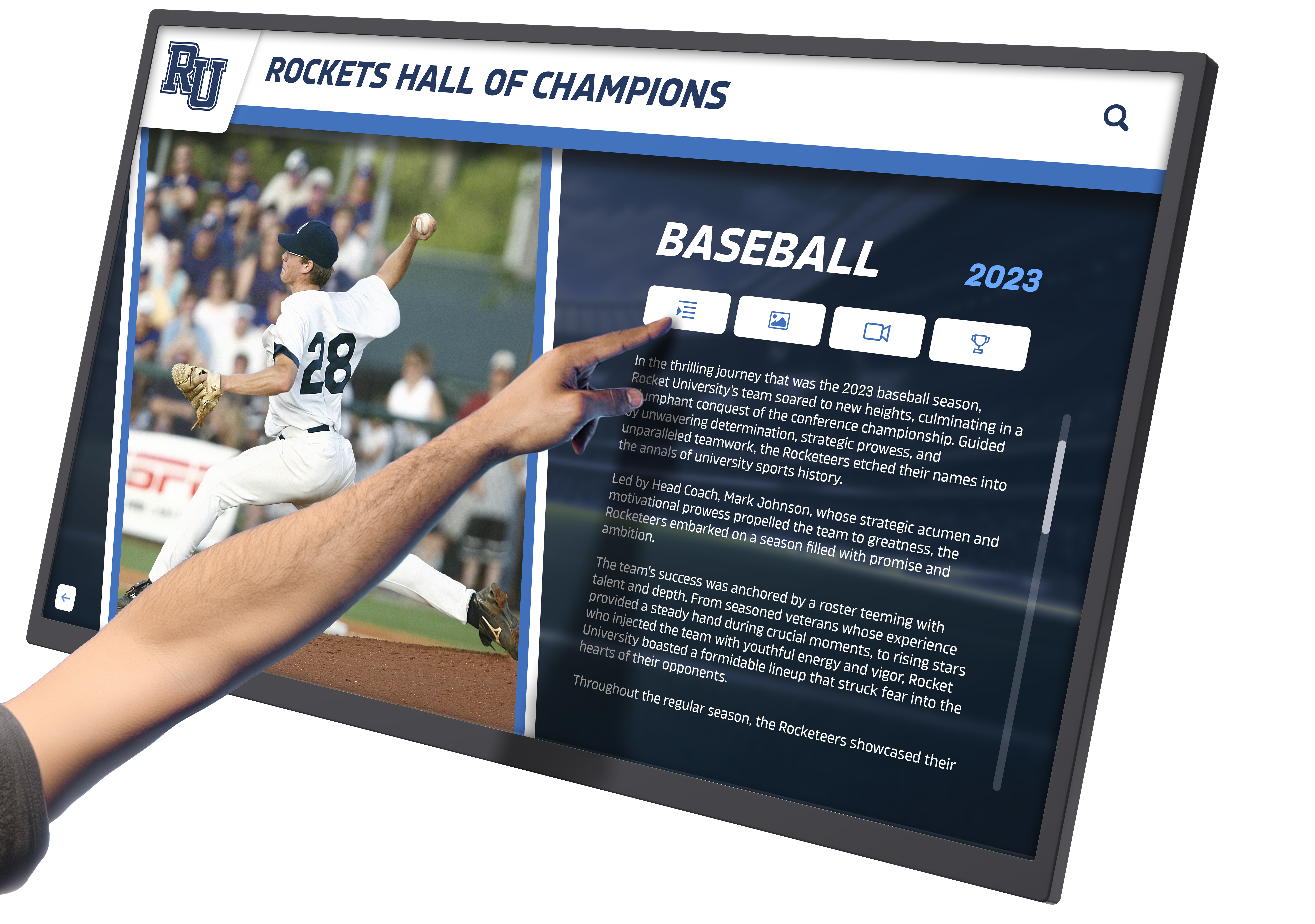
The Future of Esports Recognition in Education
As esports continues growing, recognition approaches will evolve:
Emerging Trends in Esports Recognition
Augmented Reality Integration: Future recognition might include AR elements overlaying gameplay highlights in physical spaces, interactive visualization of player statistics and achievements, and virtual trophy cases accessible via smartphone.
Live Performance Analytics: Advanced tracking might showcase real-time performance metrics, heat maps and gameplay analysis, comparative statistics across games and seasons, and predictive analytics for player and team performance.
Blockchain-Verified Achievements: Some institutions may adopt blockchain credentials verifying competitive achievements, permanent records surviving system changes, and integration with digital portfolios and college applications.
Cross-Institutional Recognition: As esports becomes more standardized, recognition might include conference and state rankings, national leaderboards and comparative statistics, and multi-school halls of fame celebrating regional excellence.
Career Pathway Recognition
As esports career pathways mature, recognition might expand beyond competitive achievement to celebrate alumni working in game development, esports broadcasting and production, team management and coaching, event organization and administration, and content creation and marketing.
This expanded recognition would mirror how traditional athletics celebrates not just players but also those building careers in sports-adjacent fields.
Conclusion: Legitimizing Excellence Through Recognition
Esports represents one of the fastest-growing activities in education today, engaging thousands of students who might otherwise feel disconnected from school community. Yet without appropriate recognition, these students’ achievements remain invisible, their dedication unacknowledged, and their contributions to school pride unrealized.
Schools implementing comprehensive esports recognition programs send powerful messages: that diverse talents deserve celebration, that emerging opportunities warrant institutional support, that student passions matter regardless of form, and that excellence manifests across many domains—from football fields to digital arenas.
The most forward-thinking schools aren’t asking whether esports deserves recognition equivalent to traditional athletics. They’re already providing that recognition, building school pride around emerging programs, attracting gaming-passionate students who see themselves valued, and positioning themselves at the forefront of an educational revolution happening whether traditional institutions acknowledge it or not.
Your esports program—whether established or just beginning—deserves recognition that honors participant achievements, builds school pride around competitive gaming, legitimizes esports within your broader athletics program, and inspires future students to join and excel. Modern recognition solutions make this easier and more cost-effective than ever, providing flexible platforms that grow with your program while celebrating gaming excellence in ways that resonate with student participants and the broader school community.
The question isn’t whether your school should recognize esports achievements. It’s whether you’ll lead this recognition revolution or follow after others have already captured the competitive advantage that comes with embracing the future of student engagement and athletic competition.
Ready to implement comprehensive esports recognition at your school? Rocket Alumni Solutions provides purpose-built recognition platforms designed specifically for showcasing gaming achievements, from individual player statistics to championship teams, through interactive displays that make esports excellence visible, valued, and celebrated. Discover how schools nationwide are building school pride around competitive gaming while providing esports athletes the recognition their achievements deserve.
